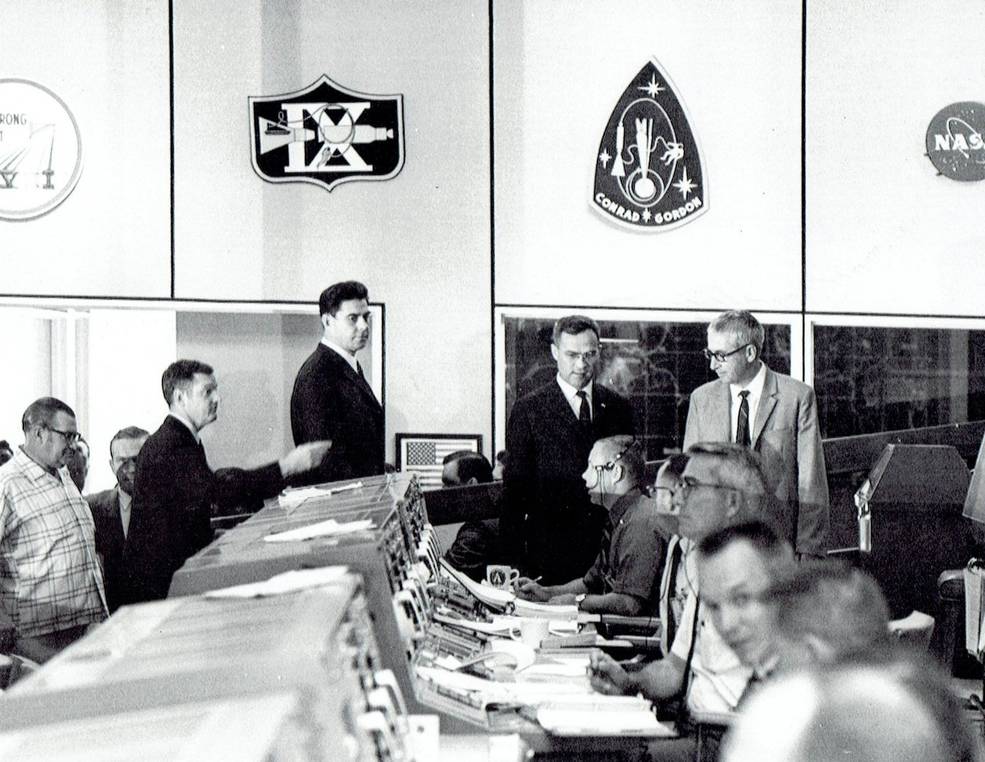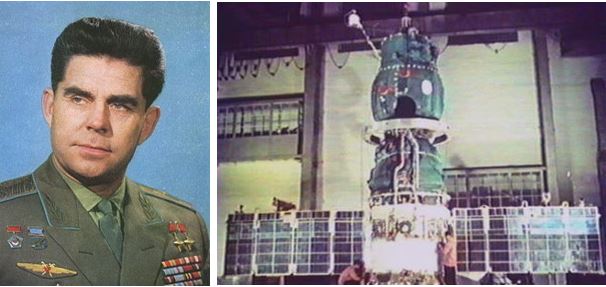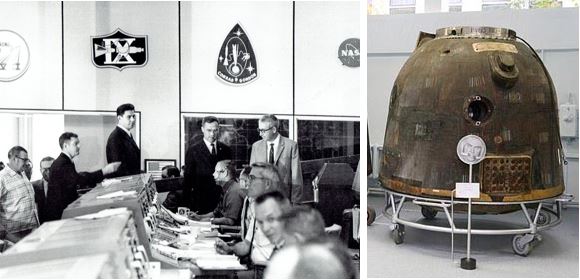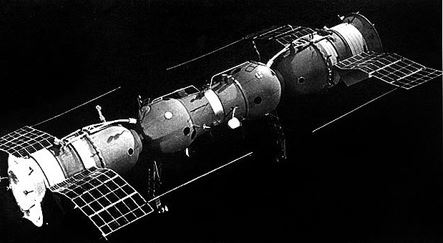Just four days after the splashdown of Apollo 7, the flight that returned Americans to space for the first time since the Apollo 1 fire, the Soviet Union launched Soyuz 3, its first human spaceflight since the Soyuz 1 accident in April 1967 that resulted in the death of cosmonaut Vladimir M. Komarov. Both countries had recovered from their respective tragedies, and by all appearances, the space race was back on.
On the American side, NASA redesigned the Apollo spacecraft to significantly reduce the risk of fire and carried out several uncrewed tests to certify it to carry astronauts. Apollo 4 tested not only the Command and Service Module (CSM) but was also the first all-up test of the Saturn V Moon rocket. The 9-hour flight in November 1967 was a complete success. The Lunar Module (LM) was first tested in January 1968 during Apollo 5, and again the mission was successful. The second flight of the Apollo CSM and Saturn V ran into Pogo oscillation and upper stage engine problems during the April Apollo 6 flight, but these were corrected through ground testing, clearing the way to fly astronauts on the next flight of the Saturn V. Additional ground testing of the CSM and LM cleared both spacecraft for crewed flights, and Apollo 7 completed the first crewed mission in October.
Since the Soyuz 1 accident, caused by a failure of the spacecraft’s main parachute, the Soviets redesigned the spacecraft to prevent a recurrence of that incident and also corrected other known problems with the ship, an effort that paralleled America’s recovery from the Apollo fire. The Soviets carried out several uncrewed tests of the redesigned Soyuz. In October 1967, they achieved the world’s first automatic docking of two spacecraft using uncrewed Soyuz capsules called Kosmos 186 and 188. They repeated the feat in April 1968 with Kosmos 212 and 213. And in a final rehearsal before resuming cosmonaut flights, Kosmos 238 was an uncrewed Soyuz test flight in August 1968 lasting 4 days, the same duration planned for the first piloted mission.
But Soyuz 3 was more than just a simple test flight of the redesigned spacecraft. On Oct. 25, 1968, the Soviets launched Soyuz 2 from the Baykonur Cosmodrome. Flying without a crew, Soyuz 2 was intended as a docking target for Soyuz 3 that launched the next day, with cosmonaut Georgi T. Beregovoy aboard. At 47 years of age, he was at the time the oldest person to fly in space. When he reached orbit Beregovoy was only 11 kilometers from Soyuz 2. The automatic rendezvous system brought the two craft to within 180 meters, at which point the cosmonaut took over manual control. He brought the spacecraft to within about one meter but the first docking attempt during the night side of the orbit was not successful, so Beregovoy tried again during a daylight pass. The two spacecraft apparently were misaligned and sensors aboard Soyuz 2 detected the problem and broke off the docking effort, and the pilot had used up too much fuel to try another docking attempt. At the time, Soviet authorities proclaimed the flight a success, not acknowledging until the 1980s that a docking had been planned but could not be accomplished.
Soyuz 2 reentered and was recovered on Oct. 28 but Beregovoy stayed in orbit two more days, during which he conducted topographical and meteorological experiments and provided a live televised tour of his spacecraft. After completing 81 orbits of the Earth, Beregovoy landed safely on Oct. 30 on the snow-covered steppes of Kazakhstan, after a flight of 94 hours and 51 minutes. The redesigned parachute system worked perfectly.
In the United States, Beregovoy’s apparently successful flight, returning Soviet cosmonauts to space for the first time since the Soyuz 1 tragedy, only added to concerns that Russia was back in the race to be first to land men on the Moon. Together with the Zond 5 uncrewed circumlunar mission in September and reconnaissance satellite images of the N-1 Moon rocket on its launch pad at Baykonur, the Soyuz 3 flight may have added pressure on NASA’s decision to send Apollo 8 to the Moon.
Soyuz 3 was Beregovoy’s only spaceflight, but he remained active in cosmonautics. Joined by fellow cosmonaut Konstantin P. Feoktistov, Beregovoy toured the United States in October 1969, hosted by astronaut Frank Borman who had visited the Soviet Union three months earlier. The tour included a stop at the Manned Spacecraft Center, now the Johnson Space Center in Houston, where Flight Director Glynn Lunney showed them through Mission Control. The two cosmonauts also visited New York City and Disneyland, accompanied by Borman and other astronauts including Eugene A. Cernan and Neil A. Armstrong. In 1972, Beregovoy became the director of the Gagarin Cosmonaut Training Center, serving in that capacity until 1987. He died on June 30, 1995, during heart surgery and is buried at Novodevichy cemetery in Moscow. His Soyuz 3 spacecraft is on display at the RKK Energiya Museum in Korolev, Russia.
































